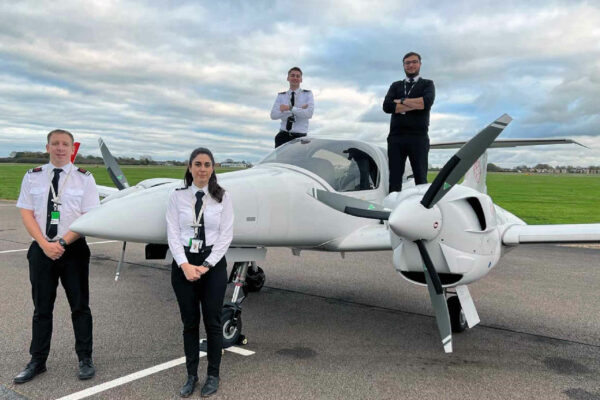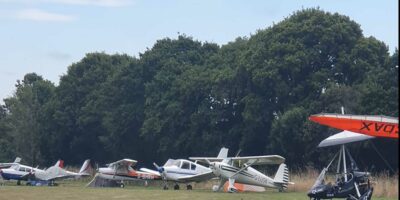The recent CAA consultation on flight crew licensing opens a rare opportunity to reshape the requirements for GA pilots. Major change for the standard PPL for aeroplanes or helicopters is unlikely – the process for obtaining one will always be based on ICAO Annex 1 – Personnel Licensing. There is certainly scope for discussion around elements such as theoretical knowledge or revalidation requirements, but not much beyond that.
The bulk of the possible changes are likely to be around the ‘sub-ICAO’ licences. The term sub-ICAO means a licence that is not issued in accordance with, or is not currently in compliance with ICAO Annex 1. This could include a standard PPL that is lacking an ICAO medical, or a licence such as the LAPL or NPPL which is not internationally recognised.
The essential proposal of the consultation is consolidating the NPPL and LAPL into one, provisionally named the ‘PPL Light’. There would be an aeroplane and a helicopter version. Within the aeroplane licence, variations in aircraft weight, performance and features would be dealt with by differences training and endorsements.
The possibility of using the more modular approach of the existing microlight training system is also discussed – for example, this could incorporate incremental privileges such as flying a certain distance from the point of origin, before the entire licence course had been completed.
This all sounds interesting and promising. It would do away with the separate LAPL and NPPL licences for new pilots and remove the need for the separate ratings within the NPPL(A) system – currently Simple Single Engine Aeroplane (SSEA), microlight and Self Launching Motor Glider (SLMG).
It is now 20 years since the NPPL system was created and the lines between the three classes of aeroplane are perhaps less distinct than they once were.
There is an obvious question as to whether we would be reinventing the wheel, but some international comparisons suggest that the proposed approach is in line with practice elsewhere. Let’s review how some of the other major aviation states approach the issue.
No two countries are quite the same, but particularly since the rise of the ‘Light Sport’ (LSA) class of aircraft, I detect a convergence that the UK should almost certainly join.
USA
The USA is normally the first international comparison that people turn to. The US LSA segment and associated ‘Sport Pilot’ certificate was launched in 2004 and is the primary sub-ICAO licence for flying aircraft up to an MTOW of 600kg.
The licence is still niche compared to the standard PPL – and FAA statistics suggest that there are around 7,000 active Sport Pilot Licence holders, compared to more than 160,000 holding the standard Private certificate.
I suspect the low uptake is down to the relatively low cost of traditional aviation in the US. However, the LSA category of aircraft is regarded as a success and the FAA appear to be looking at LSA expansion in the context of the ‘MOSAIC’ programme – Modernization of Special Airworthiness Certification. An increase in Sport Pilot privileges may also be on the cards as part of MOSAIC, including greater MTOW.
Like the LAPL, the Sport Pilot certificate does not have specific ratings that are physically entered on the licence document, instead privileges are recorded as endorsements by individual instructors. Such endorsements may cover aircraft with weight shift control, powered parachutes and some gliders and balloons.
France
France perhaps stands apart from other states when it comes to sub-ICAO licences and the microlight sector. As a member of EASA, the LAPL is an option for French pilots wishing to fly EASA aircraft. But there is not much crossover with the microlight world, and the French ‘ULM’ licence requires less formal training than the equivalent in the UK and other states.
Like the FAA Sport Pilot Licence, the French ULM licence encompasses a wide variety of small aircraft and has straightforward training requirements to move between aircraft categories.
The French decision to not fully adopt the 600kg MTOW ‘opt out’ from EASA regulation signalled that they wished to keep a stronger dividing line between the microlight sector and that above it.
This has advantages and disadvantages. The French are known for a vibrant and sizeable ULM community, with lightweight requirements almost certainly encouraging more people into the activity. However, this may reduce upward mobility into larger aircraft – as far as I am aware there is no real upgrade path from a ULM licence to the LAPL in the way that the CAA are proposing for the future UK licence.
Australia
Australia has various non-ICAO options for licensing – the Recreational Pilots Certificate (RPC) is essentially an LSA licence and as such allows flight in aircraft up to 600kg MTOW. The RPC covers three axis, weight shift and powered parachute machines. Under the Australian self-administration system, most non-ICAO licences are issued by the recreational aviation organisations.
The RPC is issued by Recreational Aviation Australia (RAAus) under a delegated authority from the Civil Aviation Safety Authority (CASA). Similar licences for gyroplanes and gliders are also issued by the relevant aviation organisations.
Perhaps confusingly Australia also has the ‘Recreational Pilot’s Licence’ (RPL), which is a CASA issued licence and is closer to the LAPL or NPPL insofar as it allows flight in aircraft up to 1,500kg.
Where to draw the line?
When it comes to sub-ICAO pilot licensing, many states seem to draw the line at the top of the LSA or microlight category (currently 600kg). For larger aircraft a full PPL is often the requirement, albeit many states also have a non-ICAO medical option for existing PPL holders, should they wish to fly domestically and with more limited privileges.
The UK and later EASA went a slightly different route by going up to 2,000kg with the NPPL and LAPL. Wherever you draw lines, individual pilots and aircraft will always fall on either side of them, but I think the approach of having as flexible a system as possible and reducing the need for formal ratings (and the associated administration and cost) is the right way to go.
I encourage all those with an interest in this area to read and respond to the CAA’s Licensing and Training Simplification consultation. It covers more than that discussed here – gliders and balloons also feature, as well as the potentially thorny issue of existing licence holders and grandfathering.







